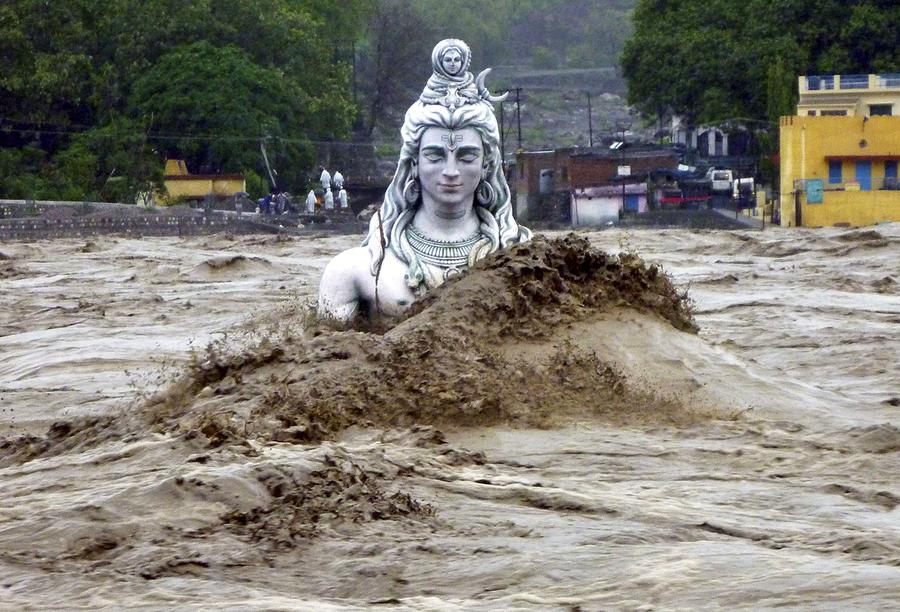By David Jacobson, Temblor
Check your seismic hazard rank

Over the last several months, the amount of rain California has received has caused some people to ask the question, could it trigger earthquakes? Much of this came as a response to an article written by Professor Gillian Foulger in The Conversation stating that research has shown a link between heavy rainfall and increased seismicity. While Professor Foulger and her co-authors from Durham University in England claim this effect is subtle, they cite small earthquakes following heavy rainfall events around Mt. Hochstaufen, Germany, in 2002 and in the Muotatal and Riemenstalden regions of Switzerland in 2005. In addition to these occurrences, studies have shown that in the Himalayan foothills, decreased seismicity is likely linked to loading caused by summer monsoons.

Foulger states that the effect is due to rainwater slowly percolating into fault zones, raising pore pressure, causing faults to unclamp. In turn, this makes them more susceptible to rupturing. An analogue to this is in Oklahoma, where wastewater injection into the bedrock has shown to cause moderate magnitude earthquakes. However, the link between weather and earthquakes is far less convincing to most scientists.
While California has experienced a significant amount of rain over the last few months, it should be pointed out that in the cases of both the earthquakes in Germany and Switzerland, they occurred shortly after record rainfall events where monthly averages were exceeded in 24 to 72 hours. In fact, in Switzerland, the quakes occurred within hours of record rainfall. Additionally, the rain in California is not anything like the monsoonal climate seen in the Himalayan foothills. Therefore the circumstances in California are very different to those observed elsewhere.

Art McGarr, a geophysicist at the USGS in Menlo Park, and someone who has been studying induced earthquakes for years, said that there is no definitive link between rainfall cycles and earthquakes. He stated that because rainfall has been routinely measured almost everywhere, and no relationship has yet been found, he remains unconvinced. He did concede though that earthquakes below the detection threshold could be influenced by rainfall. However, these would be of no impact to society and their exact cause would be difficult to determine.
While attempting to determine if rainfall could influence earthquakes may seem like an extremely unlikely possibility, scientists often look to potential links that appear to come from Hollywood movies. For example, researchers have investigated if large subduction zone earthquakes could be influenced by tidal stresses caused by varying moon phases. While there is some data in support of this theory, like the possibility that weather impacts earthquakes, most scientists remain unconvinced.
Overall, while the link between the weather and earthquakes appears thin, all of this type of research is done in an attempt to gain a greater understanding of what can cause earthquakes. Nonetheless, a claim such as this will require much more evidence before it can be confirmed. Additionally, even if there is a slight seismicity increase in California, it would be extremely hard to attribute it to weather. Therefore, for the general public, understanding the risks posed by earthquakes, and how effects can be mitigated is most important.
References
Gillian Foulger, Jon Gluyas, Miles Wilson, California’s rain may shed light on new questions about what causes earthquakes, The Conversation, February 23, 2017, Link
T. Kraft, J. Wassermann, E. Schmedes, H. Igel, Meteorological triggering of earthquake swarms at Mt. Hochstaufen, SE-Germany, Tectonophysics 424 (2006) 245–258
S. Husen, C. Bachmann and D. Giardini, Locally triggered seismicity in the central Swiss Alps following the large rainfall event of August 2005, Geophys. J. Int. (2007) 171, 1126–1134, doi: 10.1111/j.1365-246X.2007.03561.x
Bollinger, L., F. Perrier, J.-P. Avouac, S. Sapkota, U. Gautam, and D. R. Tiwari (2007), Seasonal modulation of seismicity in the Himalaya of Nepal, Geophys. Res. Lett., 34, L08304, doi:10.1029/ 2006GL029192.
Curbed SF
CBS Bay Area
- Upgrading Tsunami Warning Systems for Faster and More Accurate Alerts - September 26, 2025
- April 2025 magnitude 6.2 earthquake near Istanbul highlights strengths and weaknesses in seismic mitigation - September 14, 2025
- 2025 Kamchatka tsunami triggered rapid insurance payout in the South Pacific - September 12, 2025
